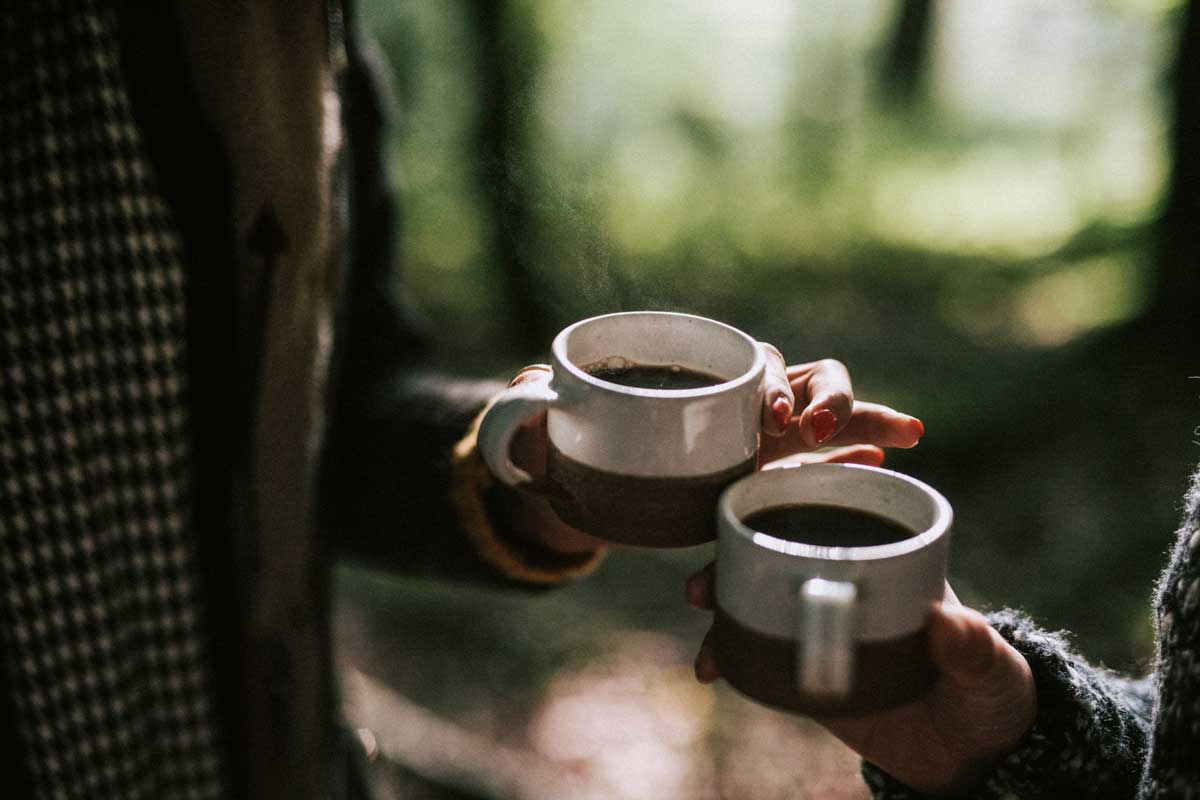Did you know that most coffee packaging is created, used, and then stays here for… well, at least your whole lifetime? You probably did, we’re all quite aware of the damage single-use plastic packaging is doing to the planet. The problem is you can’t do much about this until manufacturers, suppliers, and small roasteries like us give you an option to do so. On top of this, there’s a minefield of supposedly eco-friendly packaging options out there but little information as to what is truly best. So, below we’ve condensed our packaging research down into a few short paragraphs.
Go make a coffee, sit down for a few minutes and let’s chat about sustainability in packaging.

LET’S TALK ABOUT PACKAGING
First off, we need to understand what we want from eco-friendly packaging. There are three key areas that truly eco-friendly packaging needs to succeed in – production efficiency, performance and shelf life, and the topic that is usually the focus – what happens to it at the end of its life.
Production
The packaging needs to work well. Is it a high-barrier plastic-like material that will preserve the contents for an extended period? For something like specialty coffee, the packaging has to preserve the product to the highest level. The compostable material PLA (polylactic acid) is produced from renewable starchy plant resources like corn, sugar cane, cassava, and beets which are converted into PLA through a process of milling, hydrolysis, and fermentation. [NATUREWORKS]
“Producing PLA uses 65 percent less energy than producing conventional plastics, according to an independent analysis commissioned by NatureWorks. It also generates 68 percent fewer greenhouse gases, and contains no toxins.” [SMITHSONIAN, Royte]
Performance & Shelf Life
Heat is both a downside and upside to PLA. It begins to melt at lower temperatures than traditional plastics but this temperature is still high enough to make it a valuable barrier even for warm food products. Some naturally compostable materials, such as paper and card, compost quickly but have little or no barrier for the preservation of food products. The gold-standard is finding a product like PLA that does perform within its required shelf life but then can be composted afterwards.
“In summary, PLA in a variety of forms has been shown to be an excellent material for packaging food products. From rigid parts to flexible films the ability to process PLA on conventional existing equipment combined with a number of desirable material properties has allowed companies to take use [of] a more responsible packaging material.” [TAPPI, Green & Kunnemann]
Compostability after use & Soil Impact
The easiest-to-compost materials are usually the worst at preserving anything by their very nature. In terms of packaging, the material needs to be completely immune to the desired day-to-day environment until composting is required. With PLA this means that temperature is required to begin the composting process and this is how the European EN13432 certification functions. PLA is certified to breakdown completely within 90 days under ‘industrial composting’ conditions. Home-composting is so varied it is almost impossible to provide a reliable, blanket certification. One compost bin may be healthy, have the required microorganisms, and operate at the desired temperature – close to 60’C internally, while another may not. In colder climates, this temperature still can be achieved through the use of an insulated compost bin provided with the right mix of matter.
“There are no international standards to certify home compostable materials, but some national or company standards.” [BANGOR UNIVERSITY, Kosior, Braganca., et al]
The core takeaway from the EN13432 certification is that the material MUST be a ‘soil improver’ once composted. This means that PLA is certifed to have a positive impact once it begins composting.
Options you see elsewhere
There are a couple of other key options currently in use that are touted as eco-friendly. We wanted to share these here because it’s often hard to find information on a range of packaging options altogether. We think it’s key to share our research openly.
Recyclable plastic
Traditional coffee packaging, using layers of both foil and plastic, is non-recyclable. You would think moving to a recyclable option would be fantastic and it is a step in the right direction. However, given the horrendous figures on the low volume of plastics that actually do get recycled, coupled with the difference in recycling policies from council to council we couldn’t in good conscience head down this route if we were truly serious about making a positive impact on the specialty coffee industry.
In the UK: “46% of plastic packaging is recycled.” [BRITISH PLASTICS FEDERATION]
Worldwide: “A whopping 91% of plastic isn’t recycled.” [NATIONAL GEOGRAPHIC, Parker]
oxo-degradable plastic
While often touted as ‘biodegradable’ or simply ‘degradable’ the material that is technically called ‘oxo-degradable’ is far from eco-friendly. Essentially, it is traditional plastic with an added enzyme that will break the plastic down into microplastics under certain conditions. While this takes the plastic problem ‘out of sight’ it also removes the possibility of dealing with the plastic in a responsible and safe way.
“[European Bioplastics] EUBP has long been warning about the harmful effects of oxo-degradable plastics on the environment as well as the potential damage to the reputation and understanding of truly biodegradable plastics.” [EUROPEAN BIOPLASTICS]
